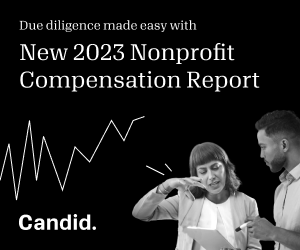Why COP28 needs to put philanthropy at the forefront of climate change solutions

As world leaders and a diverse range of stakeholders gather in the United Arab Emirates for COP28, the role of philanthropy in addressing climate change needs to be at the forefront of discussions and actions coming out of the UN conference.
This is a decisive decade for tackling climate change and aligning with the 2015 Paris Agreement’s emissions reduction commitments to limit global temperature increase this century to a maximum of 2°C above pre-industrial levels. Any impact we can deliver before 2030 is vital for the future of our planet.
But as COP27 and other previous conferences have demonstrated, efforts to address climate risks, climate justice, and climate finance have proceeded at a glacial pace. Meanwhile, glaciers are melting with devastating impact, emission targets are missed, and countries are kicking funding commitments down the road, leaving the fight for a sustainable future with a $2.4 trillion gap.
What can we actually do to make a difference over the next six and a half years? We must leverage philanthropy to deliver effective and impactful action at speed and scale. We aren’t saying that philanthropy is the only action; we are saying that it is a critical action to prioritize now.
Governments can amplify impact, but they’re too slow. Climate technologies can also deliver significant impact, but they won’t scale up fast enough to make a difference before 2030. And sustainable and impact investing drives change rapidly, but many important climate solutions cannot deliver financial returns and, as a result, fall beyond the reach of even the best sustainable investing.
That points to direct philanthropic support to deliver solutions at the necessary speed and scale. Already, the catalytic power of charitable giving is yielding results. Whether enforcing environmental law, combating deforestation, defending ocean ecosystems, protecting carbon-sequestering whales, or delivering clean energy to last-mile communities in the Global South, climate charities are delivering a host of vital solutions for this decade.
We have seen these efforts and more yield impressive results, particularly when support is targeted at organizations on the front lines and in affected communities. They are often the charities with the skills, strategies, and networks to deliver real impact at speed and scale.
But climate philanthropy isn’t getting nearly the funding it needs to fulfill its incredible potential to close the gap on the need for action by the end of the decade. Less than 2 percent of global philanthropic giving goes to climate mitigation efforts. Increasing this total is our best opportunity—as individuals, businesses, and financial institutions—to make the most of this decisive decade for climate action.
Many important causes need our philanthropic support, but they’ll fall by the wayside if we don’t tackle the climate crisis quickly. The fact is, we won’t be able to tackle poverty, health issues, human rights, or anything else if global warming spirals out of control. And it’s all connected, so much of the smart philanthropy addressing climate change is simultaneously working at the intersections of multiple important issues.
It’s important to note that philanthropy isn’t just the domain of billionaires and foundations. Individuals hold approximately $150 trillion in savings and investments globally. Allocating even a fraction of a percent of this could raise billions annually for critical climate solutions. How to go about it?
One way to prioritize philanthropic funding is to think about it in terms of the UN Sustainable Development Goals (SDGs). While popular commentary positions the 17 SDGs as a “pick and choose” exercise with equal impact, scientists Johan Rockstrom, Pavan Sukhdev, and others have argued for a hierarchy within the 17 goals. They say if we don’t first tackle the four environmental SDGs—climate action, life below water, life on land, and clean water and sanitation—the other 13 become inaccessible.
These “fundamental” or environmental SDGs—the basis for 1% for the Planet’s impact areas and the Global Returns Project’s portfolio of best-in-class charities—are among the goals that philanthropy can address fastest and most successfully. There are many examples of successes that climate charities are delivering:
- The team of environmental lawyers at ClientEarth have 168 active cases around the world tackling the most pressing environmental challenges. ClientEarth has a 74 percent litigation success rate.
- Through Rainforest Trust, 45 million acres of threatened rainforest have been protected globally; 99 percent of the rainforest protected since 1988 remains intact.
COP28 also seeks to tap the power of philanthropy to accelerate climate and nature solutions with its Business & Philanthropy Climate Forum. Forum organizers say philanthropy and business “holds the greatest promise to accelerate” action and drive progress. This first of its kind forum is a step in the right direction. But with just 500 business and philanthropy leaders participating in discussions, it is unlikely to unleash the speed and impact that is required for this moment.
What’s needed is the philanthropic equivalent of the “quantum leap in climate action” UN secretary-general António Guterres called for to launch the Synthesis Report of the Intergovernmental Panel on Climate Change. Donors and nonprofits need to lead “climate action on all fronts—everything, everywhere, all at once.” Without it, we will see a failure of philanthropy with global consequences. This is a huge opportunity for planet and people. Let’s seize it.
Kate Williams is CEO of 1% for the Planet. Jack Chellman is chief project officer for the Global Returns Project.








Philanthropy is the key to ensuring cities’ climate benefits of the Inflation Reduction Act